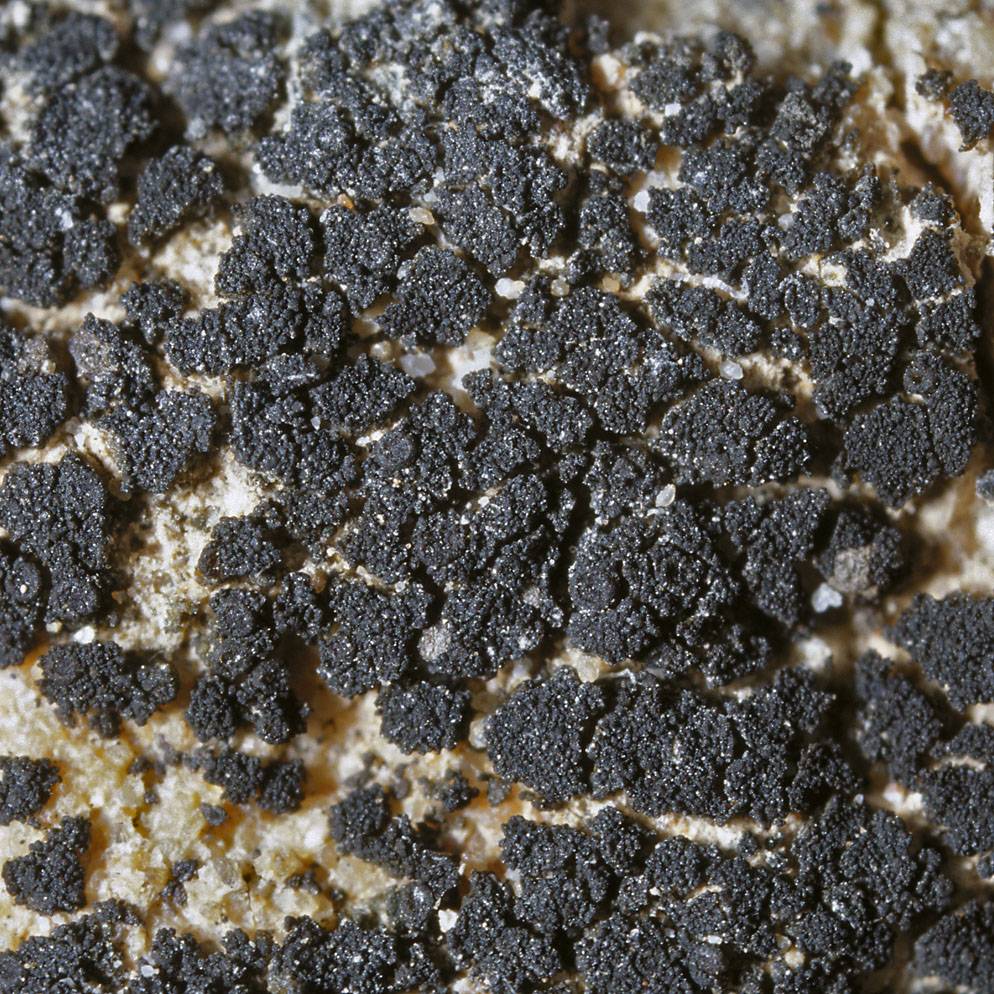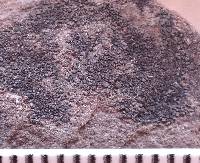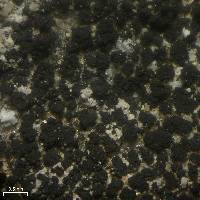
Consortium of Lichen Herbaria
- building a Global Consortium of Bryophytes and Lichens as keystones of cryptobiotic communities -
- Home
- Search
- Images
- Species Checklists
- US States: O-Z >
- US National Parks
- Central America
- South America
- US National Parks
- Southern Subpolar Region
|
|
|
|
Family: Lichinaceae
|
Nash, T.H., Ryan, B.D., Gries, C., Bungartz, F., (eds.) 2007. Lichen Flora of the Greater Sonoran Desert Region. Vol 3. Thallus: crustose areolate to granulose, often ±spreading along rock crevices areoles: ±round, becoming angulate, cracked and irregularly shaped, 0.5-1.5 mm wide, up to 0.4 mm high, contiguous or becoming separated, composed of erect, with elongated lobules or "isidioid" granules lobules: ±terete, basally branched, 0.2-0.4 x 0.05-0.1 mm upper surface: black, dull or glossy, rough, granulose to isidioid or coralloid isidia: absent but erect, elongated thallus granules or lobules appearing isidia-like lower surface: attached by rhizohyphae Apothecia: sessile, laminal or on tips of "isidia", small, up to 0.2-0.5 mm wide disc: at first punctiform, later open, depressed, black or dark red, somewhat lighter when moist, with a prominent, persisting, smooth thalline margin proper exciple: thin, up to 10 µm wide epihymenium: reddish brown, conspicuous, K- hymenium: hyaline, 75-100 µm tall, IKI+ blue asci: subclavate, uniseriate, 8-spored ascospores: simple, hyaline, ellipsoid to broad ellipsoid, (10-)12.5-17.5(-20) x 5-7.5(-10) µm: wall: thin Pycnidia: immersed, simple, ovoid, c. 50 x 75-100 µm conidia: ellipsoid, 2.5-3 x 1-1.5 µm Spot tests: all negative Secondary products: none detected. Substrate and ecology: on various rocky substrata; in sheltered or exposed habitats, often along rock crevices World distribution: SW North America and Socotra (Yemen) Sonoran distribution: Arizona, southern California (San Nicolas Island), Sonora, and Baja California Sur. Notes: With its crustose growth form with areoles composed of coralloid granules Psorotichia hassei is distinctive. "Peccania" arizonica is similar, but deviates in having larger areoles and more robust, thicker, club-shaped lobes. Furthermore, Peccania arizonica seems to be restricted to limestone habitats. |
Powered by Symbiota















